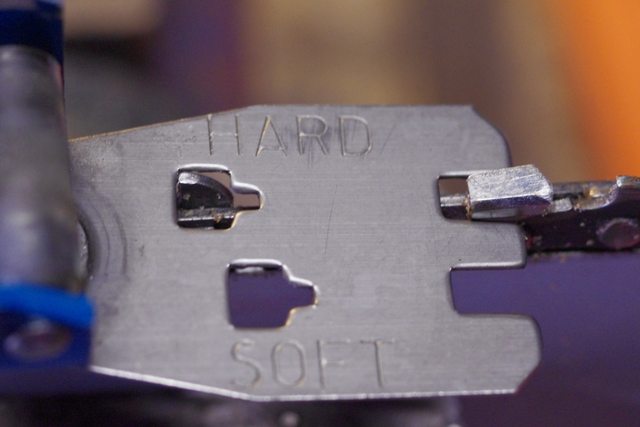I spend a lot more time than you on my own and my customers chains, about two hours including washing and oil bath.
I'd say ideally 15 minutes doing the theeth and another 15 minutes doing the rakers, but with the coffee brake, adjusting the machine and some calmness it takes twice that time.
But they gets perfect - every tooth and every rider. And they always come back for it it seems.
I might not become rich but I'll never be entirely out of work.
I want to correct that, have in mind I usually have consumed a beer if I'm on social network... (here)
I had a couple of chains this weekend so it refreshed my mind.
I usually do 13-14" chains because thats all anyone needs around here.
I use 15 minutes doing the teeth - thats 15 minutes each side.
I have a cup with cold water and a cloth in my left hand, I grind about one second at a time - then cool the tooth with my left hand. It all goes pretty quick when you get the routine.
No heated protruding edges this way, and the edge remains hardened.
Then I spend about 15 minutes doing the riders, the riders don't need cooling.
Add the adjustments and the slurp of coffee and you get one hour.
After work it needs washing - especially if you use a stone grinding wheel like I do, because you will get grinding dust from both the chain and from the wheel in to the chain.
After washing it needs an oil bath, so it don't rust and is ready for use.
I just have it in to a box of fresh oil, shake it a little and than hang it so the excess oil drips off the chain - preferably over night if I'm not in a hurry, else the chain will be soaked and the customer gets messy hands.
I take lets say about 5 dollas for the teeth and an additional 5 dollas for adjusting the rakers if necessary - which it usually is.
Customers seems quite happy, why else would they return...
I also do knives, scissors, axes and hedge trimmers and such. Whatever they ask for...
Don't stop what you do - get better at it !





